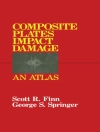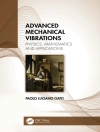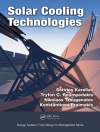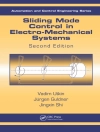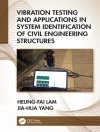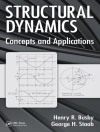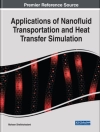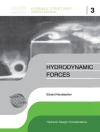Advanced Control of Aircraft, Spacecraft and Rockets
introduces the reader to the concepts of modern control theory
applied to the design and analysis of general flight control
systems in a concise and mathematically rigorous style. It presents
a comprehensive treatment of both atmospheric and space flight
control systems including aircraft, rockets (missiles and launch
vehicles), entry vehicles and spacecraft (both orbital and attitude
control). The broad coverage of topics emphasizes the synergies
among the various flight control systems and attempts to show their
evolution from the same set of physical principles as well as their
design and analysis by similar mathematical tools. In addition,
this book presents state-of-art control system design methods –
including multivariable, optimal, robust, digital and nonlinear
strategies – as applied to modern flight control systems.
Advanced Control of Aircraft, Spacecraft and Rockets
features worked examples and problems at the end of each chapter as
well as a number of MATLAB / Simulink examples housed on an
accompanying website at http://home.iitk.ac.in/~ashtew that are
realistic and representative of the state-of-the-art in flight
control.
Tabella dei contenuti
Series Preface.
Preface.
1 Introduction.
1.1 Notation and Basic Definitions.
1.2 Control Systems.
1.3 Guidance and Control of Flight Vehicles.
1.4 Special Tracking Laws.
1.5 Digital Tracking System.
1.6 Summary.
2 Optimal Control Techniques.
2.1 Introduction.
2.2 Multi-variable Optimization.
2.3 Constrained Minimization.
2.4 Optimal Control of Dynamic Systems.
2.5 The Hamiltonian and the Minimum Principle.
2.6 Optimal Control with End-Point State Equality Constraints.
22.7 Numerical Solution of Two-Point Boundary Value Problems.
2.8 Optimal Terminal Control with Interior Time Constraints.
2.9 Tracking Control.
2.10 Stochastic Processes.
2.11 Kalman Filter.
2.12 Robust Linear Time-Invariant Control.
2.13 Summary.
3 Optimal Navigation and Control of Aircraft.
3.1 Aircraft Navigation Plant.
3.2 Optimal Aircraft Navigation.
3.3 Aircraft Attitude Dynamics.
3.4 Aerodynamic Forces and Moments.
3.5 Longitudinal Dynamics.
3.6 Optimal Multi-variable Longitudinal Control.
3.7 Multi-input Optimal Longitudinal Control.
3.8 Optimal Airspeed Control.
3.9 Lateral-Directional Control Systems.
3.9.1 Lateral-Directional Plant.
3.10 Optimal Control of Inertia-Coupled Aircraft Rotation.
3.11 Summary.
4 Optimal Guidance of Rockets.
4.1 Introduction.
4.2 Optimal Terminal Guidance of Interceptors.
4.3 Non-planar Optimal Tracking System for Interceptors: 3DPN.
4.4 Flight in a Vertical Plane.
4.5 Optimal Terminal Guidance.
4.6 Vertical Launch of a Rocket (Goddard’s Problem).
4.7 Gravity-Turn Trajectory of Launch Vehicles.
4.8 Launch of Ballistic Missiles.
4.9 Planar Tracking Guidance System.
4.10 Robust and Adaptive Guidance.
4.11 Guidance with State Feedback.
4.12 Observer-Based Guidance of Gravity-Turn Launch Vehicle.
4.13 Mass and Atmospheric Drag Modeling.
4.14 Summary.
5 Attitude Control of Rockets.
5.1 Introduction.
5.2 Attitude Control Plant.
5.3 Closed-Loop Attitude Control.
5.4 Roll Control System.
5.5 Pitch Control of Rockets.
5.6 Yaw Control of Rockets.
5.7 Summary.
6 Spacecraft Guidance Systems.
6.1 Introduction.
6.2 Orbital Mechanics.
6.3 Spacecraft Terminal Guidance.
6.4 General Orbital Plant for Tracking Guidance.
6.5 Planar Orbital Regulation.
6.6 Optimal Non-planar Orbital Regulation.
6.7 Summary.
7 Optimal Spacecraft Attitude Control.
7.1 Introduction.
7.2 Terminal Control of Spacecraft Attitude.
7.3 Multi-axis Rotational Maneuvers of Spacecraft.
7.4 Spacecraft Control Torques.
7.5 Satellite Dynamics Plant for Tracking Control.
7.6 Environmental Torques.
7.7 Multi-variable Tracking Control of Spacecraft Attitude.
7.8 Summary.
Appendix A: Linear Systems.
A.1 Definition.
A.2 Linearization.
A.3 Solution to Linear State Equations.
A.4 Linear Time-Invariant System.
A.5 Linear Time-Invariant Stability Criteria.
A.6 Controllability of Linear Time-Invariant Systems.
A.7 Observability of Linear Time-Invariant Systems.
A.8 Transfer Matrix.
A.9 Singular Value Decomposition.
A.10 Linear Time-Invariant Control Design.
Appendix B: Stability.
B.1 Preliminaries.
B.2 Stability in the Sense of Lagrange.
B.3 Stability in the Sense of Lyapunov.
Appendix C: Control of Underactuated Flight Systems.
C.1 Adaptive Rocket Guidance with Forward Acceleration Input.
C.2 Thrust Saturation and Rate Limits (Increased Underactuation).
C.3 Single- and Bi-output Observers with Forward Acceleration Input.
References.
Index.
Circa l’autore
Ashish Tewari is a Professor in the Department of Aerospace Engineering at the IIT-Kanpur. He specializes in flight mechanics and control, and his research areas include attitude dynamics and control, re-entry flight dynamics and control, non-linear optimal control and active control of flexible flight and structures. He has authored 2 books Atmospheric and Space Flight Dynamics and Modern Control Design with MATLAB and SIMULINK, and over 40 refereed journal and conference papers.


